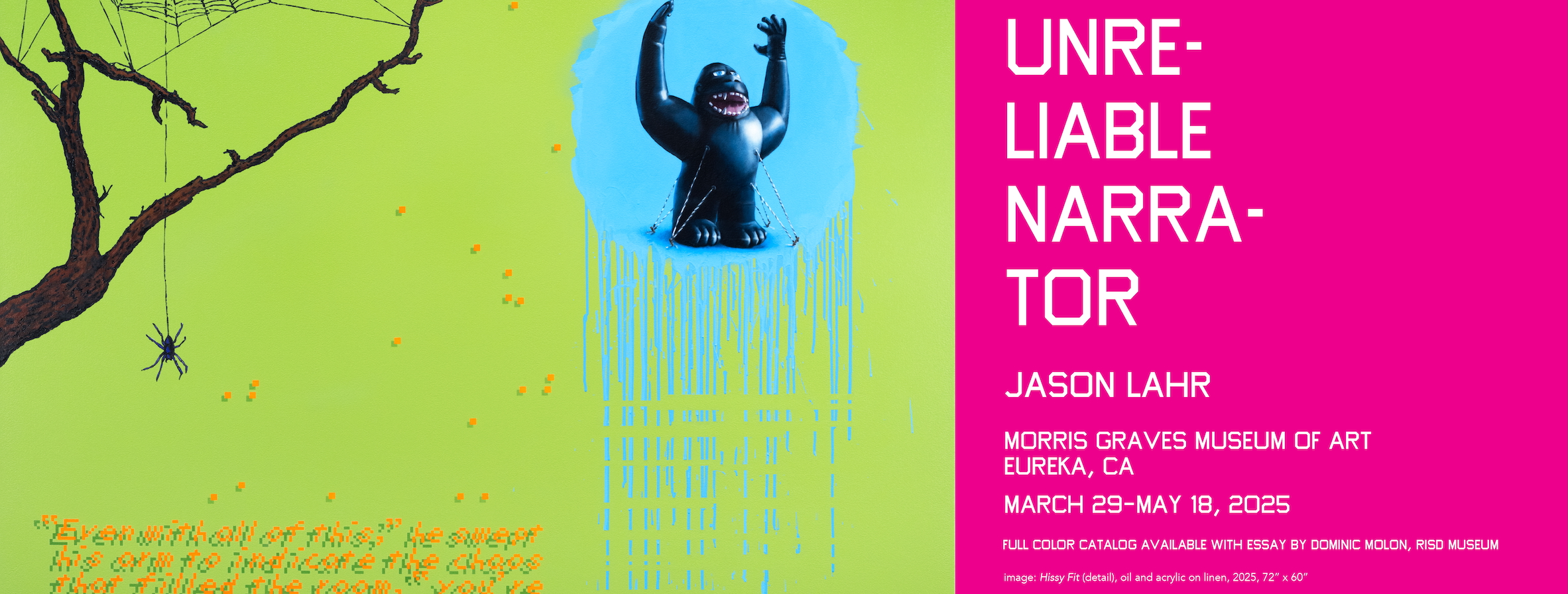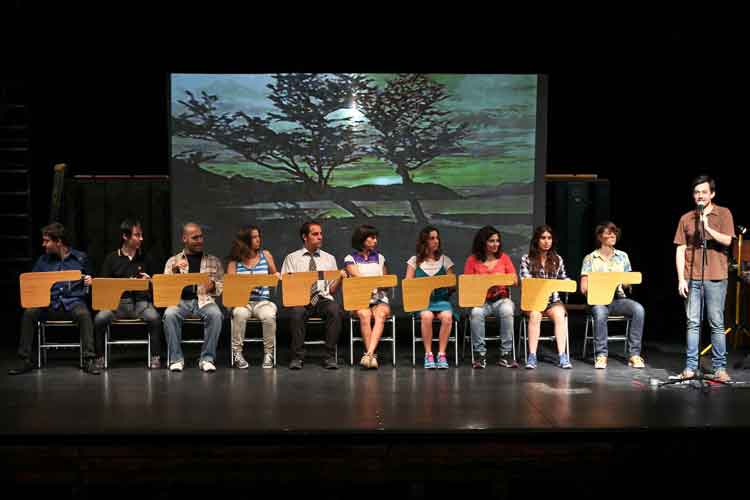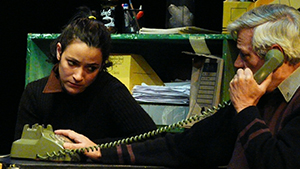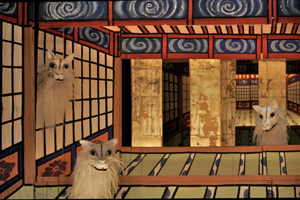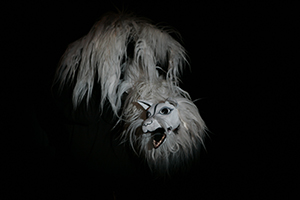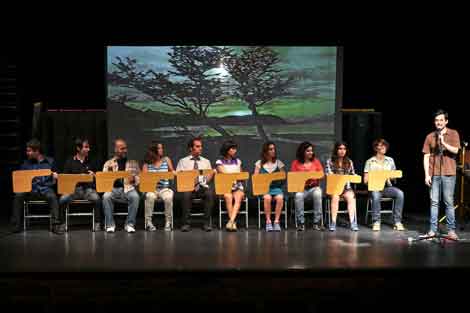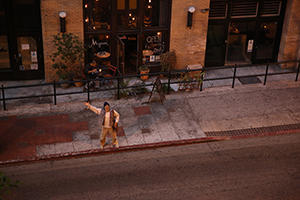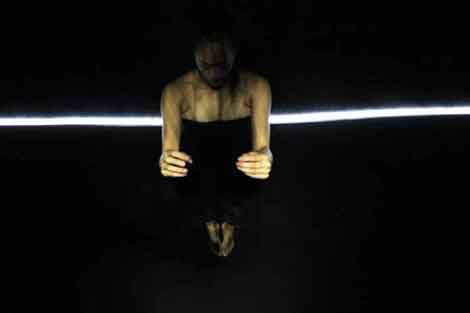The annual CalArts-sponsored RADAR L.A. festival of contemporary theater had serious offerings this year of works outside the cultural references of the English-language. Some presentations were more successful than others, based purely on the dynamics and politics of using works in translation, or not. As it’s a significantly dense festival, this reviewer tried to contain her viewership to those works from South America, due to personal interest, and Japan/Oceana. These areas of the world seemed a diverse array of examples that could show something of how different theater companies dealt with the issue of presenting their works to the multi-cultural and worldly Los Angeles audience.
Stand out works were the Argentinian group Timbre 4’s Tercer Cuerpo (in Spanish) and Dogugaeshi from Basil Twist and Yumiko Tanaka, followed closely by El Año en que Nací by Lola Arias and his company of once-Chilean, once-children of the dictator Pinochet’s era. Interesting, but with significant issues (to be discussed) were You Should Have Stayed Home, Morons (Haberos Quedado en Casa, Capullos) and Stones in Her Mouth by the all-woman Maori troupe, whose insistence in presenting their two-hour show in Maori was not the problem at all, but rather the staging.
Tercer Cuerpo (Third Wing) by Claudio Tolachir
This dynamic, humorous, and often-moving performance was excellent because of the characters, the actors, the script, the staging, the props, and the spare but important English translations projected on a highly visible but unobtrusive screen above and to the rear of the simple, effective set.
Five characters, whose lives slowly intertwine around each other’s secret personal challenges, and in some cases, shame, reveal their conditions over the course of the presentation as facets of economic and social crisis. A would-be father is really a child and can’t bear the thought of paying for dependents, so he seeks affairs. A talkative snoopy office-mate, full of false compassion for deaths affecting the lives of people close to them, has actually lost her home and is sleeping in the office; her ‘cell-mate,’ who seems the most prepared for life, reveals to her obstetrician that her husband is a fiction, and we realize at the same time as she that she might never have a child, her one hope in the world. Manuel has lost his mother; his lover; but later gains an absurdly youthful hair color, as he is forced “out of the closet.”
As the stage becomes more emotionally-pressured and self-contained—the lights flickering, the phone lines occasionally being cut-off—the spilling, boisterous Italian-inflected Spanish, being spoken at times by all the characters over the top of each other, paints a picture of a very particular kind of despair. The deflation of hopes is the living result of Argentina’s austerity measures, themselves the result of strict codes of behavior inherited by a society that deceived itself once under a dictatorship to preserve lives themselves.
The characters are resigned, together, to compassionately live out what is left of this fate they come to realize they unwittingly share. Because there are parallel story lines happening across and over the top of each other on a stage that “ruptures” and then is recomposed into the third (and forgotten) wing of the unnamed company, the translators took the liberty of indicating who was speaking when, so that even audiences with some or no Spanish could take in the entire gravity of the characters’ conditions. All the actors, but in particular those with the larger roles—Melisa Hermida, Daniela Pal, and José María Marcos—deserve a lion’s share of the credit for carrying this amazing show.
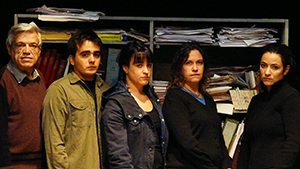
Left to Right: José María Marcos, Hernán Grinstein, Magdalena Grondona, Daniela Pal, Melisa Hermida. Photo: Giampaolo Samá.
Dogugaeshi by Basel Twist and Yumiko Tanaka
This intriguing and beguiling puppet show tells of an old-world Japan crushed by modern life but reinstated through art and theater. This history unfolds through the representations and abstractions found in Japanese screen design—the screen itself becoming a stage, a curtain, and a character, as well as a backdrop to the larger losses incurred by the onslaught of modernity.
Told in what some might see as a characteristic of CalArts-infused media, the narrative is about a screen, behind a screen, behind a screen, behind a screen… at least five screens down, but maybe more. It became difficult to keep track of the literary device as the screens opened into an almost ludicrous infinity.
Thanks to someone in the sound booth who indicated the tiny pillows on the floor in front of the stage down front, from where one is supposed to see a puppet show, we got the full experience of Dogugaeshi. I feared anyone behind the fourth row would have needed binoculars, especially as it came to the fifth- and sixth-layers of screen. There, crucial information about nature’s inspiration for the ancient screens was revealed in patterned abstractions of water lilies, flowers, and water, which rapidly alternated during a retrospective and climactic moment of the story.
But to say that Dogugaeshi has a story line is to miss the point perhaps. The dancing, alternating, and shifting screens had a spatial fluidity that was representative of going back and forth in time, both literally in the narrative, and as one might do playing a piece of music, where modulations on themes or familiar refrains weave in and out of contrapuntal harmonies. Yumiko Tanaka, the show’s masterful co-creator, was this counterpoint. She sang and skillfully played extraordinary traditional Japanese music on a 13-string koto. Her kataginu, a formal kimono with oversize shoulder pads of the nineteenth-century Edo Period, was a stage set in itself.
That most American viewers could not understand the words to Tanaka’s songs—and they were nowhere translated—did not detract from the show, as it was brilliantly designed, paced, and staged so that one waited to patiently absorb the unfolding images and depths. The audience would wait for the “star” puppet, a dragon/fox character, to come across the stage, sometimes as silent commentator or as if it were a narrator, though the puppet’s presence was only occasional and really more of a charming, beautiful and emotive touch. The captivating drama infused throughout the work is also told through a series of four golden panels, who together formed a screen, or broke apart, or trembled; these felt like the most puppet-like characters—funny, absurd, playful.
Clearly Dogugaeshi has a narrative—the screens had to be built, the theater space they defined was on an island, which stayed protected in its pre-modern charm until a bridge was built, perhaps postwar, and the theater was forgotten within the loudness of new entertainment forms. The screens experienced the ravages of time, given in the image of a dragon and its chaos. A brief video “intermission” had a quickly translated 60 seconds of interviews with elderly women who told stories of the island, remembering how one could see the sun set directly on top of Mt. Fuji. This small, imagistic interlude could be almost forgotten, were not the focus of this article “translation.” Basil Twist and Yumiko Tanaka create a world where visual language, gesture and song interpret for us a story of loss and resurrection.
El Año en que Nací (The Year I Was Born) by Lola Arias
Agentinian Lola Arias, the accomplished playwright of El Año en que Nací, worked together with a diverse group of young men and women who lived through the Pinochet era in Chile to create this informative, delicate play about the legacy of that country’s civil war, coup d’etat and subsequent dictatorship. Born between the years of 1971 and 1989, the actors tell their true stories; the stories (as much as they know) about their parents; and try to arrange themselves into a newly composited picture of the once-broken Chilean society.
Stories of exiles, tortures, and extrajudicial killings are sown through the personal stories and memories of children, who had nothing to do with their parents’ war. They create maps on the floor with chalk to chart the exiles; they banter, play at recreating events, bring out old documents, letters and clothes; and arrange themselves every now and then along different spectra to see where they fall—either by mother or father’s ideology, by class, by skin color. Punctuated commentary and bickering happen throughout, though it is clear they like and support each other, and each person is given their own time to talk personally. These testimonial moments are scripted, controlled, but still emotionally honest, revealing, sometimes shocking, at other times banal.
There are moments of surprise in the play and lots of humor. It is clear these children do not inherit the prejudices of their parents, and most have seen the deterioration of a parent that signed up too eagerly to fight for or against a Chile “más organizado” (as Pinochistas put it). Some of the stories resound with the irony of these conflicts: a young woman with a leftist father who “disappeared”—not in the political sense—finds him later to be given the excuse for having abandoned his children: “I’m sorry, but Pinochet fucked up my life.” Another, whose father supported Pinochet ideologically for economic reasons even though he was unemployed for ten years as a result of the situation, can no longer walk; he was at the far right in one spectrum, but in another goes far left when he reveals their house had a dirt floor.
Another father has gone paranoid. A mother, who used to have tea with Mrs. Pinochet, no longer speaks to her daughter; this brave soul, Viviana, went digging through records and found out the father she was told was dead is really in prison for his part in a brutal political killing. When he gets out, she says, she will ask him some questions. Another woman is still pursuing justice for her mother, an activist in the MIR revolutionary party, who was cornered in a house in Las Condes by 85 members of the police force, riddled with bullets (she came out shooting), stripped naked where she lay and was photographed as some kind of sick trophy. Heartbreaking moments like this were hard to bear for audiences who had similar histories, in Argentina, for example. For American audiences, some learning the extent of C.I.A. involvement in the coup, the reality is just purely untranslatable.
The play ends with a paralleling of each individual’s current struggles or milestones (one fought cancer, one came out of the closet, another finished her education) across a timeline showing Chile’s milestones. These young people are the survivors, they are a picture of a nation—there right in front of you, on the stage. They point out that Chile still carries the blood-stain of Pinochet’s call for “Libertad” on its still-circulating 10 peso coin; everyone in the country touches it, and flipping heads or tails for who will be the next President, it’s clear that the national currency symbolically betrays a long, if not impossible exit, from the country’s traumatic, decades-long “emergency.”
You Should Have Stayed Home, Morons (Haberos Quedados en Casa, Capullos) by Manuel Orjuela
You Should Have Stayed Home, Morons is a structurally interesting work. Four monologues happen in four distinct sites in the city. For this version in Downtown LA, we started in a new civic pop-up park, moved to a slummy-bar and finished in a loft-apartment (not a new one), with one of the monologues occurring on the street below as we watched from above. But as it was, the LA version of the play was circumstantially limited by locations and actors. It’s curious why, in a city of so many Spanish-speakers, the complex language, word plays, and cultural references were ever translated into English.
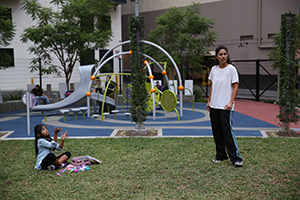
Cristina Fernandez and Augusta Hirsch in You Should Have Stayed Home, Morons at Radar L.A. Photo: Steven Gunther.
The first monologue was the most problematic. Delivered by Christina Hernandez, it was given in the park, recently completed by the looks of fresh plastic play equipment, a new lawn, and the modernist metallic benches with square blocks to keep people from sleeping on them. We listened to Hernandez explain frustrations to her young daughter (Augusta Hirsch) about motherhood, how it’s like “thinking with someone else’s head.” The performance was necessarily loud so that we could hear it, but with the dramatic infusion came an overplayed hand. When “thinking with someone else’s head” turns into a gory fantasy about taking off the heads of schoolchildren, making a mountain out of them and then having headless bodies recombine with the mismatched decapitations (and even a Chihuahua), the raving-in-English reaches a ridiculous crescendo. In Spanish, the absurd scenes described would be natural to the rolling fantastical language of magical realism (the writer Manuel Orjuela, like Gabriel García Marquez, is Columbian) and consistent with the Latin American context of horrors like the Guatemalan genocide and other anti-leftist “anti-terrorist” campaigns. In American English, there is no context for these images besides zombie movies, and I was not the only one groaning inside about the possibility of having to sit through three more monologues in this tonal range.
Thankfully the second, in a bar only a block from Skid Row, only suffered from emphasis. A drunk woman (Rachel Sorsa) opining philosophy to her passed-out mother (Sissy Boyd) about time passing insists repeatedly throughout the monologue that she be given a “glass with water” not a “glass of water.” But this emphasis is out of scale because to say “a glass of water” is not really a problem in English. In Spanish, the difference is starker; un vaso de agua suggests the glass is made of water. Bystanders in the bar, uninterested in the whole proposition, just left.
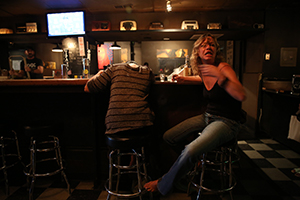
Sissy Boyd (sleeping), Rachel Sorsa in You Should Have Stayed Home, Morons at Radar L.A. Photo: Steven Gunther.
The apartment location, where a homeless man we had seen wandering around our “tour” was then camped at the door, became the site of the second half of the play. The first monologue was his—expounding on what makes a good “beating,” and the beatings he likes to give. Having to scream the word “beating” up to the third floor, across the street with city buses going by, was a serious challenge the actor did meet. But the word—which was used often—is not a good English word to describe the violence of the act. In Spanish you can add the ending –tazo to words for extreme emphasis (paletazo, golpetazo, etc.), like a hand striking down the one being beaten. How I longed to hear this monologue in Spanish. The actor, Sal Lopez, did an excellent job with what he was given to work with, and we could even hear him over the buses. He also played well with the other people on the street, clearly seeing him as a raving lunatic, or someone looking for a ‘good’ fight.
Finally, for the fourth act we then turned our attention inside the apartment. This was ostensibly a lesson from a father to his son about freedom, street smarts, and the trauma of growing up and losing one’s innocence. The actor, Adam Lazarre-White, had to drink a beer while delivering it, and he never lost an edge. His son (Phillip Solomon) sits patiently trying to get through The Catcher in the Rye before school. Solomon delivers the final coup d’grace of the play, “You should have stayed home, morons,” when his dead-beat Dad goes to bed and we realize we have spent two hours listening rather uncritically to adults spout their bullshit. Left with our pants down, we sheepishly applaud, loudly. I enjoyed the whole experience and the idea to stage a play in this way; however, with all that innovation into the form and delivery of theater, couldn’t someone have figured a way to subtitle the work so as to keep this play coherently in Spanish?
Stones in Her Mouth by Lemi Ponifasio/Mau
Radar L.A. audiences had the privilege to see the first public showing of the dense yet minimalist performance Stones in Her Mouth. Given that it will not premiere until December, there are not as many photos being made available for this work. Stones in Her Mouth is performed by Mau Company, a group of 10 Maori women, all of whom have studied traditional dance. Choreographer and creator Lemi Ponifasio had the concept to work with young women in Maori communities as a “leadership project,” and all of the songs and chants in the show are written by them.
There is barely any access for the audience to the world of the women, except where they want you to have it. The stage is open, no curtain, but at the start a blinding light projects out into the audience, forcing people literally to bow their heads. This light was intolerable—not a normal spotlight but some kind of halogen?—and if that was the intention, okay. But the problem was that it started setting off migraines and made people leave. The practical effect was to allow the women to step forward into the light when they desired, and to flow back into obscurity. The result—even with the light off, the purple tracers would not stop and the ability to see what was being presented suffered. Even though this light was taken out ten minutes into the show, a thin band across the back of the stage remained, which was still very hard on the eyes. The beginning of the work is so entirely slow that people could keep their heads down and look up intermittently; however, this destroyed the possibility of watching the deliberation and control of the women performing in one continuous stream.
Normally, I like the attitude of assaulting the audience; however, I’m not convinced it was the intention to make the work hard to see.
When the performers were closer to the front of the stage it was easier to look at the light, as there was something to focus on. So many of the performances were captivating, and proceeded from the central organizing idea of the Maori woman as story-teller, life-giver, and composer of moteatea (songs). The choreography emerged from the traditional female poi (ball) dance and gestures. The poi themselves were sometimes repurposed as devotional objects, or hidden in black sacks so their weight and movements would remain unexposed. The sounds they make hitting the body and the coordination needed by the women to synchronize the complex movements across the company were nothing short of impressive.
When I was in Rotorua, New Zealand earlier this year, I enjoyed attending a performance at a marea (cultural/religious house). In opposition to expectations for “cultures on display,” the kinds of explanations, smiles, welcoming, and education of those institutions were markedly absent in Stones in Her Mouth. Instead, the company’s expression is unfiltered and unapologetic. It is also strongly worded. The themes of the songs ran the gamut—from love to loss to defiance and anger. None were translated, but it was pretty clear. In one haunting piece a performer painted with a red cross (as in the British flag) across her naked body, becomes an abstraction of colonization visited upon the flesh. At the same time, nearly over her, another woman performs a strenuously energetic stick dance traditionally reserved for men. Women, it seems, have had to adopt multiple roles beyond the traditional, and there has been a cost.
The first human for Maori was a woman. Her name was Hineahuone, and she is invoked in a song cycle at the beginning of the performance. Woman is voice in the world of the Maori, which contrasts sharply with the title Stones in Her Mouth. The performance is as much about cultural loss, silence, and mourning as it is about cultural survival, language preservation, and the individual ideas of each of the composers. The searing white line the performers are constantly stepping over is an important symbolic element in staging the work. I hope those who had to leave because the right light frequency has not yet been found can come back to see all of Stones in Her Mouth another time. It will chase around my eyelids for a long time yet to come.

